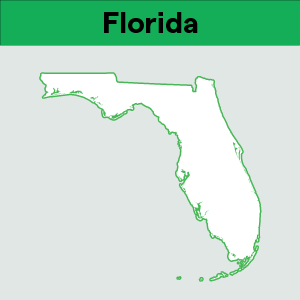European VAT Explained for U.S. eCommerce Sellers
by September 7, 2016
This explanation of European VAT is brought to you by our friends at Simply VAT.
Selling in the European Union – The Opportunity
Whether you are selling via your own online store or using the marketplaces such as eBay or Amazon, the European ecommerce market is a very attractive option for USA sellers.
The biggest markets within the EU are UK, France and Germany, which account for 60% of the online retail market with a population of over 210 million people between them. Online sales in most EU countries grew by 18% in 2015 and are expected to rise another 16% both this year and next year to reach a staggering £215.38 billion in 2017.
Value Added Tax (VAT)
With an established, mature online retail market in Europe, there is help every step of the way from advertising to the local market, to translating your website to suit the local market and culture, to getting your goods delivered to your customers in the best possible time. Many online retailers, however, are ignorant of their tax obligations when selling online in Europe. Please be fully aware, because selling online does not excuse you from the societal rules of taxation and the tax man wants his piece of the pie.
Value Added Tax (VAT) is the preferred transactional tax model in the EU and is equivalent of the USA sales tax. It differs from sales tax though as VAT is applied every time value is added– from the raw material supplier, to the manufacturer to the wholesaler and retailer and finally to the end consumer.
Over 140 countries world-wide have adopted the VAT model, likely because governments get revenue every step of the supply chain. It is not, however, supposed to be a burden on businesses, who, once VAT registered, can offset any VAT collected on sales against any VAT incurred on expenditure – including import VAT.
The VAT collected on the final sales to the consumer is kept by the tax authority. This is why the EU tax authorities have become more focused in looking to collect revenue from the explosion of online sales.
Governments are becoming more aggressive in finding non-compliant online sellers, simply because they get to keep the VAT owed to them from online sales to private consumers. The UK government has recently introduced new legislation that allows the UK tax authority to work with intermediary sites, such as Amazon and eBay, to identify those who have not complied. According to new measures, if traders continue to evade VAT, online marketplaces can be made liable for VAT. This can mean that if you don’t prove to Amazon that you are compliant, they will shut down your Amazon account, AND, the tax authorities can (and do) issue penalties and interest charges for non or late VAT compliance – sometimes up to 400% of the VAT owed.
Ignorance of the VAT rules that affect online sales is no defence. Not accounting for VAT properly or not reporting it at all can cost you your business.
The European Union VAT Rules
How you choose to distribute your goods to your customers will have VAT implications for you as the seller. Here we explain which issues affect you:
Using Fulfillment Centres in the European Union
- Wherever your stock is held, whether it be an Amazon fulfillment centre or other third party warehouse, as a non-resident, you now have an obligation to VAT register there. There are no thresholds to exceed.
- If your stock is in a number of EU countries, you will require VAT registrations in all the countries where your stock is held.
- The tax authorities do approach the warehouses and marketplaces for information on sellers and they will catch up with you if you don’t comply.
The EU VAT Distance Selling Rules
Once you are VAT registered in one EU country, sales delivered from that country to local private customers or customers in other EU countries are governed by the EU VAT distance selling rules. These rules state that local VAT is charged on any sales to any consumers within Europe until the set distance selling thresholds are exceeded in any one country.
The thresholds are:
- Euros 35,000 (or equivalent) in All EU countries, except:
- Euros 100,000 (or equivalent) in Germany, Netherlands, Luxembourg
- £70,000 (or equivalent) in the UK
The Distance Selling rules do give you a chance to test the European markets without the heavy cost of VAT compliance.
Monitoring Your Sales
When calculating whether you have exceeded the threshold, make sure you add sales from EACH channel you sell on – all sales go towards the distance selling thresholds.
Also include in that calculation the shipping amounts you collect from customers.
Other Reporting Obligations
EC Sales Lists – When stock is sold or transferred between EU countries, there is additional reporting obligation to file an EC Sales List. For example, if stock is moved from the UK warehouse to a German warehouse, this will need to be reported on an EC Sales List as well as the UK VAT return.
Intrastat Declarations – Intrastat Declarations are statistical reports that are obligatory once set thresholds are exceeded in each EU country. The EU tax authorities use the Intrastat Declarations as an economic indicator to the health of the EU economies. There are thresholds for both ‘dispatches’ (goods leaving an EU country to go to other EU countries) and ‘arrivals’ (goods arriving in one EU country from other EU countries). You will need to monitor sales, for example, from the UK to any EU countries, and once these ‘dispatches’ reach £250,000, intrastat declarations will need to be filed.
Fiscal Representation – as a non-EU company, some EU countries require a non-EU business to have Fiscal Representation. A Fiscal Representative is jointly and severely liable for the VAT owed. There are additional fees associated which can include a bank guarantee. They don’t want to be left holding the baby or paying the bill! A solution to this is to establish a company in a European country, eg. The UK. If you do establish a company, there will be reporting obligations such as annual accounts. You will also be liable to pay local Corporation tax if you make a profit. The cost of running a local company, may however be cheaper than having to use Fiscal Representatives in the relevant countries across the EU.
Where Import VAT is Applied: The First Point of Entry into the EU
Local import VAT will be charged on the cost value of the goods you are importing, for example, in the UK the import VAT is at 20%. The import VAT and duties have to be paid straightaway.
If you are not VAT registered, your customer is usually left to pay the import charges before they can receive delivery of the goods. This is not really the best customer experience.
If you are VAT registered, you will account for the VAT:
- You charge the customer the VAT when they buy the goods from you so there are no unpleasant surprises for them on delivery. This is paid over to the tax authority on the VAT return.
- The import VAT charged is refunded to you via the VAT return.
Know the EU VAT Rates
Each EU country has a standard rate of VAT and a reduced rate of VAT. Standard VAT rates across the EU range from 17% to 27%. The VAT rate applied will depend on the type of goods, for example, books are ‘zero-rated’ in the UK and Ireland. Find out which VAT rates apply to your goods.
Competitive Pricing in the European Market
Be aware that one price might not fit all. Unlike the USA where sales tax is added after the sale, in Europe, VAT should always be included in the price shown to consumers. Should you charge different prices in different EU countries on different channels or does one price fit all? How badly will your margins be affected by the different VAT rates if you don’t differentiate price in each EU location? Will you stay competitive once you have to VAT register in another EU country?
It’s always a good idea to do some local market research in your chosen markets and find out how you compare to local suppliers and how much flexibility this gives you. Keeping ahead of the game can avoid a lot of future headaches and can even mean the difference between the success and failure of your business.
Invoice Compliance
In some countries the provision of an invoice is compulsory. Each country has different criteria for what information should be presented on an invoice. Make sure you are applying the right VAT rate and is the correct information on the invoice?
VAT Returns
Once registered, you will have to submit VAT returns to the tax authority, in the language, at the frequency and on the deadline specific to that country.
Brexit: How the UK leaving the European Union affect selling Into Europe
Currently, many non-EU sellers use the UK as a gateway into the EU single market. Should the UK leave the European Union, this will no longer be an option as goods entering into the European will now be classed as an ‘import’ and will attract import VAT and duties.
In order to access the EU single market, the seller will now have to establish a new VAT registration in another EU country, such as Spain, or Ireland, or Germany. Once a EU VAT registration is obtained in one of those countries, it is ‘business as usual’ as the online seller will again be able to deliver goods directly to EU consumers using the EU VAT Distance Selling Rules (see above).
Please note however, it will take at least two years away from any such changes – there is in fact talk of it actually taking 7 – 10 years. In the meantime, the current EU VAT regulations apply – ie. if goods are sold from the UK, the EU VAT distance selling rules apply. Also, the rules for registering when using fulfillment centres in any EU country will also still apply.
Don’t let VAT pose a barrier to your European expansion plans
Don’t be put off by the VAT rules, we are here to help you. Our advice is ‘plan ahead’. Add the cost of compliance to your cashflow along with other staples such as web-hosting or accountancy fees. Those who have already taken the leap into selling into Europe find the rewards far outweigh the cost of compliance.
If you want to know more, please get in touch at www.simplyvat.com to discuss how we can help you.
About the Author
SimplyVAT.com was launched in 2013 to help online retailers trade internationally and successfully without being burdened by complex VAT legislation. Claire Taylor, CEO of SimplyVAT.com has over 18 years experience in the global VAT industry. Claire knows that selling online gives you access to lucrative worldwide markets and moreover, if the VAT is correctly managed, the seller can concentrate on selling.
SimplyVAT.com comprises of a team of VAT experts to provide first class expertise in international VAT compliance in all European countries and other territories where local laws prevail.









